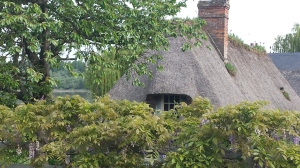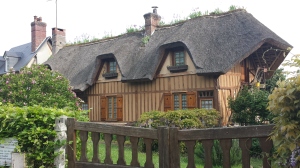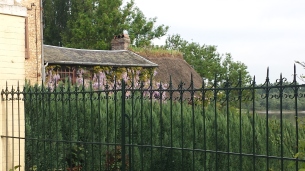If you had only 36 hours in the city of Amsterdam, Holland, a.k.a. the Netherlands would you jump at the chance? Or would you decline, reasoning that there wasn’t enough to time to “really” see the city? Operating on the theory that enjoying one and a half days in Amsterdam is better than no days in Amsterdam, I submit that it’s all about making good choices. Truly, there are no wrong choices since it’s a matter of preference and prioritizing what matters or intrigues you the most. A city such as Amsterdam has so much personality it should be its own small country where you could easily spend a week or more. However, we’re talking brevity here. The best planners will always start with a master list, one that eventually gets culled to the final magic number. Here, that magic number was 3. Three experiences seemed manageable given the short amount of time but they needed to be unique to Amsterdam. My initial list included historical choices such as the Anne Frank House and several museum options. I added in some limited “seasonal” selections that included Keukenhof, a 79 acre park that is on every gardener’s wish list. Local experiences such as bike riding past the wind mills or floating down one of the many canals on a barge were also considered. My decisions were based upon opportunity, emotional content and what was uniquely of Amsterdam.
My first choice was to visit Keukenhof located 45 minutes from Amsterdam in Lisse. Keukenhof is one of the largest gardens in the world with 79 acres of sheer beauty. As with so many other things in life, timing is everything. With a window limited to a scant 8 weeks each year, the opportunity to see the 7 million springtime blooming bulbs is narrow. I reasoned that I could always visit Amsterdam again but I wouldn’t be able to guarantee that a future visit would coincide with the blooming of the bulbs. I would be a fool to not take the opportunity to witness 800 varieties of tulips, hyacinths and daffodils sprouting in unison. A mélange of reds, pinks, burgundies, oranges, whites, yellows, greens, blues and violets spread throughout the park as though a rainbow had literally been planted in this magnificent garden and sprouted. Some of the gardens were themed and one of my favorites was the Delft garden. The famous blue and white pottery bears the name of the city where it’s produced and is a popular collectible item. It was also used as a focal point for a blue and white garden. In an unexpected twist the pottery was broken into pieces which were then randomly attached to a waist high white wall. The flowers planted at the base of the wall were color coordinated in blue and white. It was simple, unexpected and elegant. If you have the opportunity, I would certainly recommend a visit. If you never travel to Holland, a visit to your local garden center might be the next best thing. Eighty percent of the bulbs grown in the park are exported, many to America.
My second choice was a somber choice. I opted to visit the Anne Frank house at Prinsengracht 263, Amsterdam. It is the former Opekta factory owned by Anne’s father, Otto Frank. Mr. Frank ran a successful business selling spices and pectin for making jams. When it became clear that he and his family would be persecuted by the Nazi regime Mr. Frank transferred ownership of his corporation to an associate and with his family and several other associates, went into hiding in a secret annex of the building. During this time, his coming-of-age daughter Anne wrote poetry and diary entries that seem wiser than her limited 13 years. Her writings were published in a book titled “Anne Frank: The Diary of a Young Girl”. It has been printed and published in 60 countries, translated into 70 languages and more than 30 million copies of the book have sold. [DC1] The book urges you to revisit the past so as not to repeat the same mistakes in the future. Of all the great speeches given during World War II the voice of one young Jewish girl still speaks to us. If you stop to listen, what you will hear, above all, is “hope”. My travel companions and I arrived without a reservation for a timed entry ticket and opted to take a chance by waiting in line. The exhibit opened at 9:00am and we thought we’d beat the crowds by arriving an hour prior to opening. As I got on the back end of a very long queue, I realized that many other tourists had the same idea. After an hour of standing in the cold we purchased our admission tickets and followed the slow moving line into the exhibit. We walked silently through the former office building and got a real sense of the era. The preservation of the living quarters offered proof of how well prepared the family was. At the center of all this are the writings of a 13 year old girl, Anne. Through her diary entries you get the sense of a young girl on the cusp of becoming a woman, wise beyond her limited number of years. I look at her photos and in her face I see my mother as a young girl. The similarities are immediately noticeable and I realize how fortunate I am that my Jewish Grandparents were already in the states when the war broke out. No person can exit that building without a new appreciation for the freedom they enjoy on a daily basis.
My third choice brings art and culture to the mix. There are over 50 museums in Amsterdam, far too many to see in a 36 hour period but I reasoned that I should visit at least one. I chose to go to the Rijksmusem, (rhymes with bikesmuseum) partly because of proximity. Also, because I thought I would find the collections at the Rijksmuseum a bit more accessible than the abstract impressionism of the works at the Vincent Van Gogh museum. Stepping up to the admission desk I was advised that the museum would close in 45 minutes. My query about where I would find the most important collection resulted in being directed to floor 2. I didn’t have time to wait for the elevator and dashed up the stairs and came face to face with “The Nightwatch”. This grand painting is one of Rembrandt’s most famous and was drawing crowds. The familiar “Syndics of the Draper’s Guild” was also on display. I will publicly admit that my recognition of the piece had more to do with a Dutch Masters cigar box than cultural acumen. With closing time approaching quickly, I made an effort to view as many works as possible as I headed for the exit. Despite the pedigree of the pieces housed within the majestic building perhaps the most popular piece resides in the outside courtyard. If you appreciate pop art, you might be familiar with the classic set of giant letters that spell “Iamsterdam”. They are located in front of the museum and have been used in a campaign to promote the city. Each letter stands 6.5 feet high and collectively the letters stretch out to 77 feet long. The crowds waiting to photograph the display were so thick that I left without getting a picture of the iconic image. Perhaps next time. Good planning helped me maximize my experience in a minimum amount of time. While I did leave satisfied with what I saw and what I did, I’m happy to say that the city also left me wanting more. With flight time less than driving to Washington D.C., it’s a great long weekend option and I hope to return in the future.
 So much so that it’s noticeable from above when you get your first glimpse of the country from an airplane window as you begin your descent into the airport. It’s been said that Paris is one of the most beautiful cities in the world, however, this isn’t about Paris. Indeed, Paris is beautiful in many parts, and truthfully, a little ordinary in others. But, it wasn’t the city that caught my eye, instead it was a 20 minute detour due to a missed turn that captured my heart. I admit that I approached Paris as though expecting a quick fling. Much like a first date, you’re nervous about the introduction to the city, not knowing what to expect, wondering if you will click. But, the French countryside, well that was definitely more than a crush. The French people have a phrase for it: “le coup de foudre”, which translates to love at first sight.
So much so that it’s noticeable from above when you get your first glimpse of the country from an airplane window as you begin your descent into the airport. It’s been said that Paris is one of the most beautiful cities in the world, however, this isn’t about Paris. Indeed, Paris is beautiful in many parts, and truthfully, a little ordinary in others. But, it wasn’t the city that caught my eye, instead it was a 20 minute detour due to a missed turn that captured my heart. I admit that I approached Paris as though expecting a quick fling. Much like a first date, you’re nervous about the introduction to the city, not knowing what to expect, wondering if you will click. But, the French countryside, well that was definitely more than a crush. The French people have a phrase for it: “le coup de foudre”, which translates to love at first sight.

